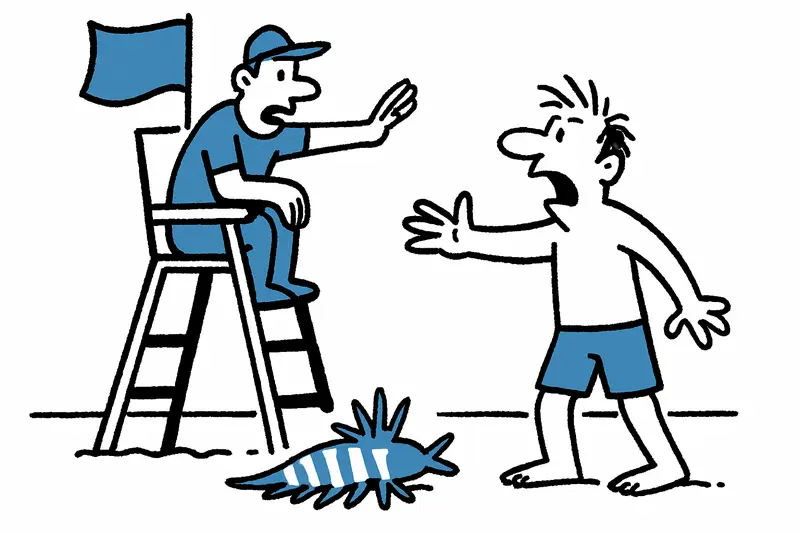Several beaches near Almería were temporarily closed after sightings of the blue-white striped Blue Dragon sea snail. Here is what beachgoers should know now.
Why Beaches Are Suddenly Closed
In recent days, authorities along parts of the coast near Almería closed several beaches. The reason: sightings of the blue-white striped sea snail, commonly known as the Blue Dragon. In Villaricos, the coves Cala Siret, Cala Verde and El Playazo were especially affected. Two sections have since been reopened, where now only the orange flag flies instead of the red one. Still, caution is advised.
What makes the animal dangerous?
At first glance the animal is small and almost pretty. That is deceptive. The dragon belongs to venomous sea creatures. The stinging cells it acquires from its prey can cause painful stings. Affected people report severe pain, nausea and vomiting — symptoms no one needs on a beach day.
Practical Advice for Beach Visitors
A few rules to remember, especially if you are at the sea with children: Do not touch the animal under any circumstances. Not with bare hands, not with gloves, and not with a towel. Even dead specimens can still be dangerous. If you see something unusual in the water or on the beach, inform lifeguards immediately or contact the local authorities.
For a sting, rinse immediately with seawater or saltwater, do not use freshwater. Cold compresses relieve the pain, and then head to the nearest first-aid station or health center. In Spain, the emergency number is 112.
How the Authorities Are Responding
The decision to close beaches is often made at short notice. Colleagues on site report that in Guardamar del Segura and Torrevieja beach surveillance has stepped up checks in recent weeks. You see signs, more patrols in the morning, and occasional loudspeaker announcements — especially on hot days between 11 a.m. and 1 p.m. when many families are out.
For locals this is a strange summer-side effect: at the end of May there had already been a sighting near Mallorca, and now the animals are appearing again on the mainland. Weather, ocean currents and food availability probably play a role.
In short: No panic, but respect for the sea. If you see something: keep your distance, report it, and seek medical help immediately if stung.
Similar News

Die Zeit auf Mallorca: Warum die Uhren hier anders ticken
Auf Mallorca läuft die Uhr offiziell anders als die Sonne — ein Erbe aus den 1940er-Jahren, das bis heute unseren Alltag...

Orange Weather Warning for Mallorca: Heavy Rain and Thunderstorms Set the Week
Aemet warns: Monday and Tuesday on Mallorca are under orange alert. Heavy rain, floods, and traffic disruptions are poss...

Life-threatening swimming accident in Ibiza: 73-year-old revived on the beach
During severe storms, a 73-year-old visitor swam despite a red flag. Lifeguards rescued her, and she is now seriously in...

Mummified Body Found in Abandoned House Near Santa Margalida
Between Can Picafort and Son Serra de Marina, teenagers discovered a mummified corpse in an abandoned house. Identity an...

Large Rockfall Blocks Ma-2141 Road Near Sa Calobra
After heavy rainfall, several rock blocks toppled onto the winding Ma-2141 toward Sa Calobra over the weekend. The road ...
